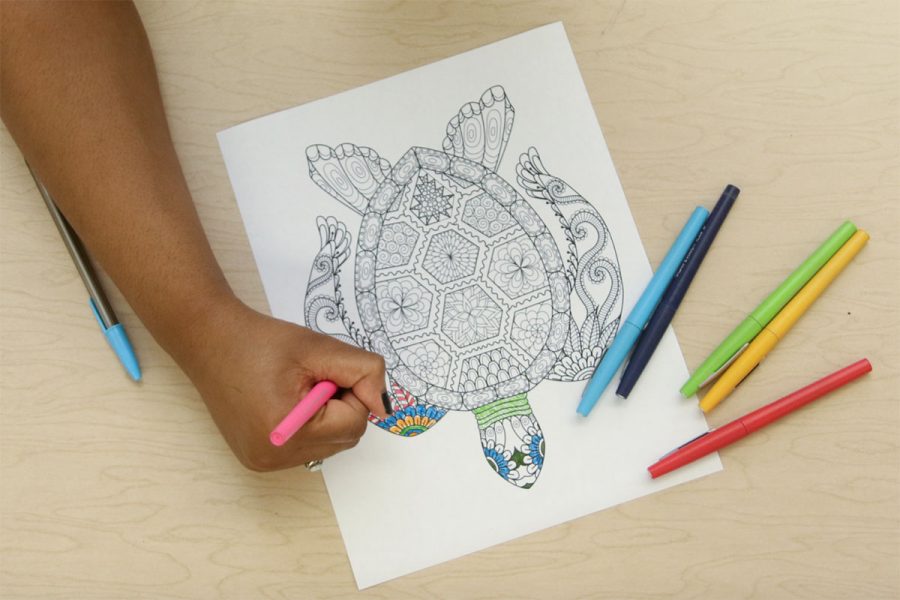Break out your coloring supplies
Coloring books prove to be therapeutic
Photo by Kaitlyn Gordon
May 10, 2018
Coloring books are no longer just for the kids. In fact, adult coloring books are all the rage right now. The new generation of books are typically filled with intricate black and white illustrations that are art themselves. While many find the act of coloring to be a calming distraction from hours spent tapping, swiping and staring at screens, some early adopters aren’t exactly hooked.
According to the American Art Therapy Association, art therapy is a mental health profession in which the process of making and creating artwork is used to “explore feelings, reconcile emotional conflicts, foster self-awareness, develop social skills, reduce anxiety and increase self-esteem.”
According to the Cleveland Clinic article, coloring “relaxes the brain. When thoughts are focused on a simple activity, your brain tends to relax.” Clinical psychologist, Scott M. Bea, mentions, “We are not disturbed by our own thoughts and appraisals. The difficulties of life evaporate from our awareness, and both our bodies and our brains may find this rewarding.”
However, it is important to note that using an adult coloring book is not exactly the same as completing an art therapy session. Certified art therapist, Marygrace Berberian, believes that coloring is not an art therapy because there is no client and therapist interaction. The main difference that all art therapists seem to agree on is that there is a stark contrast between the benefits of coloring for adults and the art therapy profession.
Despite the fact that coloring and art therapy aren’t quite the same thing, coloring does offer a slew of mental benefits. Art therapy is also helpful among people dealing with a variety of other conditions, such as depression, dementia, anxiety and PTSD. Just like meditation, coloring also allows us to switch off our brains from other thoughts and focus only on the moment, helping to alleviate free floating anxiety. Coloring can be particularly effective for people who aren’t comfortable with more creatively expressive forms of art.
Yet, adult coloring does not relax everyone. The activity depends on the individual and their prior experiences. Researchers suspect that the more a person enjoyed coloring as a child, the more likely he or she is to respond to it positively as an adult. When an adult colors, they’re transported back to the stress free days of childhood. Getting back those happy memories helps one relax, feel optimistic and energetic for the future.
The Guardian spoke with Drena Fagen, an art therapist and an adjunct instructor at New York University Steinhardt School, who is not averse to using adult coloring books in her therapy sessions, however, makes it clear that coloring is not art therapy. “I don’t consider the coloring books as art therapy; I consider the coloring books therapeutic, which is not the same thing,” Fagen said.
Life today is a rat race of accomplishments, stress and competitions. This may be self evident, but coloring is a pretty low pressure activity. There is no way to win, lose or even play the game. Some may view coloring as frivolous, but when is the last time you sat down and did something just for the fun of it? With all of the stresses of life, we could all use an activity that elicits childhood nostalgia and promotes some good old fashioned fun. Coloring can act as your designated “me-time,” and also as a way to increase self esteem.















